To start growing grass carp at home, with the aim of further implementation, it is worth buying fry and organizing natural freshwater conditions. Such a business can bring profit to the owner on a regular basis, and besides, it can provide healthy food products at minimal cost.
The content of the article:
- Features of breeding white Cupid
- general characteristics
- How to breed at home?
- The profitability of breeding white Amur in a home pond
- Example of calculating basic costs
- Joint breeding of silver carp and white Cupid
Any angler wants to catch this representative of the carp family. After all, he is one of the largest inhabitants of freshwater reservoirs. This and much more makes it an attractive target for industrial breeding. Under natural conditions, the white Amur lives in the Amur, Sungari, Ussuri rivers and Lake Khanka within East Asia. In nature, there are two types of these fish: white and black. However, the second has a lower taste and plasticity and therefore is not, in a broad sense, a commercial fish. The object of artificial cultivation in ponds and other bodies of water is precisely grass carp. It feeds mainly on plant foods. Although small and medium-sized fish can sometimes eat other crustaceans.
Features of breeding white Cupid
Reproduction of "grass carp", as also called grass carp, has a number of undeniable advantages.
- Significant growth rate.
- Reaches a weight of 32 kilograms.
- The meat has excellent taste.
- Low oxygen requirements.
- Low susceptibility to infectious diseases.
- Participates in the natural purification of water.
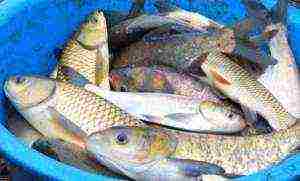
Grass carp gains marketable mass in a very short time. Subject to the correct growth conditions and successful breeding, it reaches a weight of 800 grams at 2 years of age. Three-year-olds grow up to 1500 grams, and four-year-olds up to 3000-3200. It is one of the fastest growing representatives of the marine fauna of East Asia, which gives it a high fishing potential.
An important factor is that adult fish can reach a mass of 32 kilograms and grow by more than 120 cm. This fact attracts fans of sports fishing and makes it possible to receive additional profit from fishing. The culinary features of this carp are also highly valued. Its white meat is very dense, fatty and tasty. Low requirements for the O2 content in water will reduce the likelihood of flock death due to low aeration.
This species of carp has a fairly high immunity and resistance to disease, which increases profitability due to the relatively low pestilence. The ability to feed on huge amounts of aquatic vegetation gives it another irreplaceable advantage. Stocking of reservoirs, reservoirs and cooling of power plants makes it possible to fight algae with significant efficiency. Adult representatives can eat an amount of vegetation exceeding their body weight by 1 or even 1.5 times.
general characteristics
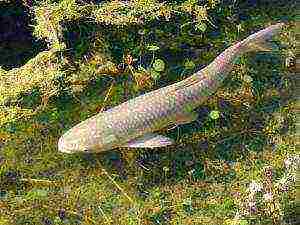
This freshwater inhabitant received its second name due to its external resemblance to carp. However, it is not a competitor in the food chain and is slightly different in physiology and behavior. Malek of this species feeds on zooplankton. As he grows up, he switches to a purely vegetarian diet. Adult fish eat various types of algae, as well as wild terrestrial grass. If there is a lack of food in the ponds, it is enough to mow the herbs and throw them into the water for feeding. The feeding of grass carp strictly depends on the temperature regime and completely stops at 12 ° C and below. A temperature of 25-30 ° C is most suitable for him.
At this temperature, it develops as quickly as possible. It is because of this regime that the grass carp in the southern regions of Russia is somewhat larger in size than their peers in the northern and central regions. The stocking density of this species is entirely related to the intensity of the vegetation in the pond or lake. At a high density, large numbers of fry can be launched. In the European part of Russia, this representative of freshwater can only reproduce artificially.
How to breed at home?
Naturally, this representative of freshwater breeds only in a typical habitat. The fundamentals of industrial reproduction were developed by scientists from Russia and Japan. Females ready to spawn are kept in optimal temperature conditions. The best option for breeding is ponds with a high content of algae and achieving optimal temperature values (25-30 ° C) in the spring-summer period. The algorithm for breeding adults of this species includes the following stages:
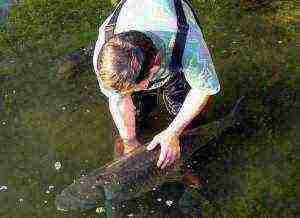
- Fertilization and incubation.
- Hatch.
- Feeding the larvae.
- Growing up of underyearlings.
- Feeding young grass carps.
- Feeding adult grass carps.
At one time, females bring about 500,000 healthy eggs. Taking into account the low productivity of seed material, the material of two males is used to fertilize one female. Fertilization produces a high level of waste of living material. So, out of 500,000 eggs, only 100,000 fingerlings survive.
This representative can spawn only when the water reaches a temperature above 20 ° C. As it was said, grass carp will not spawn in ponds, even if there is a high flow rate in them. You should resort to additional manipulations to breed it. To do this, before spawning, females are separated from males and carefully examined for the start of spawning.
Caviar and seed matter develop quite normally in them. But for the very stage of fertilization, the so-called pituitary injections are used. The introduction is carried out in two stages. On the first, a preliminary injection is made, on the second - the final one. The material for the introduction can be extracts from the pituitary glands of a carp or crucian carp. Following the first injection, females and males are placed in a reservoir with running water. One day later, a second injection of the material is made, after which they are placed in a less flowing environment. After that, I collect the caviar by the usual straining.
Fertilization
Eggs from one female 4-5 years old are mixed with 5 ml of male seed. You should be very careful when mixing caviar, as it can be quickly damaged. Most often, a pen is used for this. After mixing, add water to the contents in the ratio of caviar to it ½ and rinse up to 10 times. After constant washing, the caviar swells significantly. It is then placed in a Weiss device. Against the background of all the manipulations, up to 30% of the eggs die.
Hatch
After hatching, the larvae are placed in nylon nets, which are installed in artificial pools or reservoirs with a low current. The larvae require a specific regimen. Within 6 days, it is required to maintain the temperature at 21 ° С, the next 4 days - 23 ° С, then 2-3 days - 30 ° С. With proper adherence to the technique, the larvae take the correct position in the water and begin to feed.
Feeding the larvae
The conditions of the reservoir do not always have enough plankton for the normal feeding of the larvae. For this, various feeding options are used. As a rule, a mixture of crushed egg yolk and cottage cheese is used. The larvae are often eaten by insects and other small inhabitants of water bodies. To do this, you need to thoroughly clean it before breeding.
Growing up of underyearlings
For this, special small-volume fry ponds (up to 200 m2) should be used. After the fry reach a size of 2-3 cm, they are transplanted into a larger container (from 500 m2). Young individuals are raised in water areas with the calculation: 250 larvae or 45 fry per 1 m2.
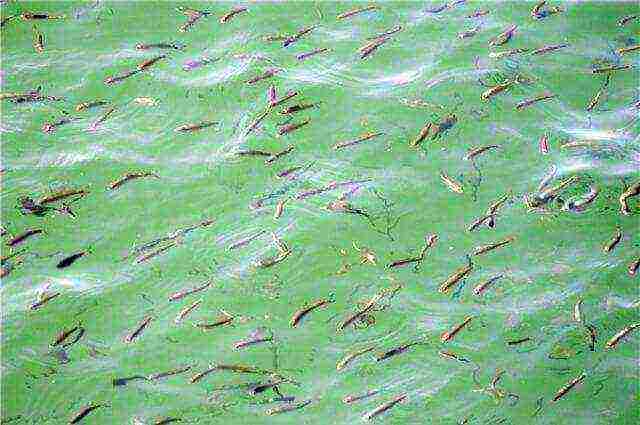
Feeding juveniles
Underyearlings are fed even if there is a sufficient amount of plankton. After being placed in water at the age of 5 days, soy mixtures or special juvenile feed are used. Feeding is set at a frequency of 1 time per day with the obligatory fixation of food mixtures on the surface of the water to prevent drifting.
Feeding adults
Adults usually feed on their own only plant foods. With a decrease in the level of nutrition in the case of high stocking, special compound feed is used. For full growth, no more than 1-2 individuals should be kept per 1 m2 of temperate vegetation. Ordinary terrestrial vegetation can also be used for additional nutrition for adults. When consuming a large amount of algae and reducing their population, as well as with a seasonal lack of food, you can simply throw cut grass into the pond. You need to feed adult fish about 4 times a day.

To reproduce this type, not only natural reservoirs can be used, but also special fully mechanized complexes with plastic pools and a system of aeration and water pumping. This simplifies care and fishing, and reduces the likelihood of infection. However, significant funds will need to be spent on compound feed, which is not required in ponds with sufficient vegetation.
The profitability of breeding white Amur in a home pond
With the right approach to the cultivation of grass carp, its fishing effect will become significant. The low cost of plant-based compound feed increases profitability.
Example of calculating basic costs
Let's calculate the profitability with a water area of 1,500 m2. Let's take the following averaged data:
- estimated fish productivity - 1,000 kg / ha;
- the average weight of a yearling is 50 g;
- price - 230 rubles / kg;
- average survival rate - 75%;
- marketable weight - 1,000 g;
- wholesale price - 120 rubles / kg;
- feed price - 7 rubles / kg;
- grain feed ratio - 5 kg;
- the price of lime (at the rate per season of 1,500 kg / ha) - 7 rubles / kg.
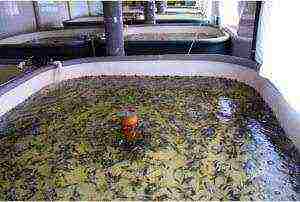
Thus, the total weight of the fish will be 1,500 kg.
The planting density will be equal to 1333 pcs / ha.
Planting material price: 23,000 rubles.
The total price of the whole offspring: 180,000 rubles.
Feed: 52,500 rubles.
Lime: 15 750 rubles.
Total expenses: 91 250 rubles.
Net income: 88,750 rubles.
Profitability: 197%.
Of course, there are also more profitable fish varieties. However, the best results can be achieved by using a combined method of growing several low-competitive or non-competitive freshwater species.
Joint breeding of silver carp and white Cupid
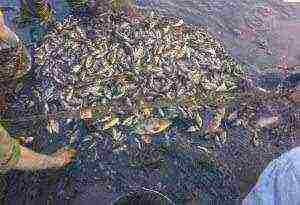
Special attention should be paid to the possibility of fish breeding in one environment using a combined method. One of these for the white Cupid is silver carp. The difference in diet allows them to be successfully grown in shared waters. It is worth noting that in the diet of the white Amur during the season there are significant differences in ponds and lakes in most of Europe and Asia. This is due to the cyclical growth of certain algae that it feeds on. Silver carp uses phytoplankton in its diet, which makes it easier for it to tolerate seasonal fluctuations in food availability. The difference in the diets of these two representatives avoids food competition. Such a successful symbiosis makes it possible to keep not only them together in the same environment, but also to plant other fish. These benefits are often used to rationalize fisheries and generate more profitable businesses.
Another possible symbiont for these freshwater representatives is carp. It also has no food or other competition with them, which makes it possible to build more complex systems of cohabitation of these species.
The grass carp is a large fish belonging to the carp family. In the wild, grass carp in nature lives in East Asia. You can meet him in the river. Amur and rivers of South China.
This type of fish is very much appreciated as a commercial one.White carp, the cultivation of which has become industrial, is distinguished by the excellent taste of meat, as well as accelerated growth. This type of fish is good for breeding and the fact that the maximum part of its diet is algae. Amur can also be used to clean ponds from excess aquatic plants. During the day, this fish eats about two kilograms of algae per one kilogram of its weight. The white carp lives in a flock.
The grass carp is a fish with an elongated body, which is slightly compressed from the sides, and with a low head. The mouth is straight. The scales of these fish are large and have a black border along the edge, with the exception of the scales on the belly. The dorsal fin is rounded and its origin is slightly in front of the base of the pelvic fins. The fish have a roundness of the back before the beginning of the dorsal fin and the belly after the pelvic fins. There is a considerable distance between the pelvic fins and the anus. The anal fin is small and rounded. Only the caudal and dorsal fin are painted dark, the rest are light. The color of the fish is predominantly silvery-golden. The back has a greenish tint, the belly is slightly golden.
Grass carp reproduction
The grass carp, whose reproduction in ponds is very beneficial, can quickly grow up to 1.2 m in length and 32 kg in weight. For sale, fish are caught at the age of 2 to 3 years, when their weight is in the range from 300 to 800 grams. The fish productivity of grass carp is equal to 1 c / ha. From what the water temperature will be and what the feed will be, the fish become sexually mature at different rates. Fish hibernate at depth in pits.
Spawning in grass carp begins at a water temperature of 26-290 C from May to June. During periods when food resources are insufficient, the sexual development of fish is inhibited. As a result, the fertility of grass carp decreases. Fish weighing 6-8 kg spawn about 1 million eggs. Cupid's eggs are thrown into the water column. In nature, grass carp begins to spawn when the water warms up to 18.5 ° C. The peak of spawning occurs at a temperature of 24 - 28 ° C. Fish spawn in large rivers with strong currents. The grass carp, which is cultivated on fish farms, spawns at the time planned by people. This is achieved by changing the temperature of the water. The disadvantage of fish can be considered the moment that running water is certainly needed for spawning.
Cupid what to feed
The grass carp feeds only on food of plant origin. It is fed not only by aquatic plants, but also by terrestrial ones. White carp lives only where higher aquatic plants grow, since only they are suitable for food. In industrial cultivation, in the case of an insufficient amount of algae in the pond, the ground grass is mowed and thrown into the pond. Young grass carp eats crustaceans and bloodworms, but, having matured, they switch to full vegetarianism. Due to the fact that fish, eating algae, deprives mosquitoes of breeding places, people feel comfortable in the areas of its habitat. If the water is warm from 25 to 30 ° C, then grass carp is able to eat more feed per day than it weighs itself.
The planting density of the one-year-old grass carp directly depends on the overgrowth of the pond with algae. With moderate vegetation, this is 1-2 individuals per 1m2. In relation to carp, the number of grass carp should be within 10-15%. If there is too little vegetable feed, the fish begins to eat artificial feed (compound feed).
cupid video
If you are interested in the fishing industry, or you are just an avid fisherman, we recommend that you familiarize yourself with our headingfish farming
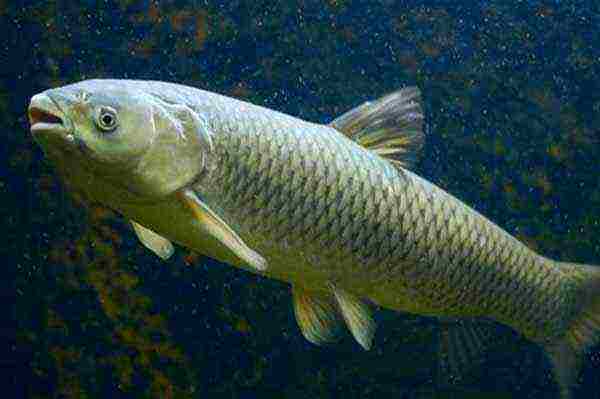
Tweet


